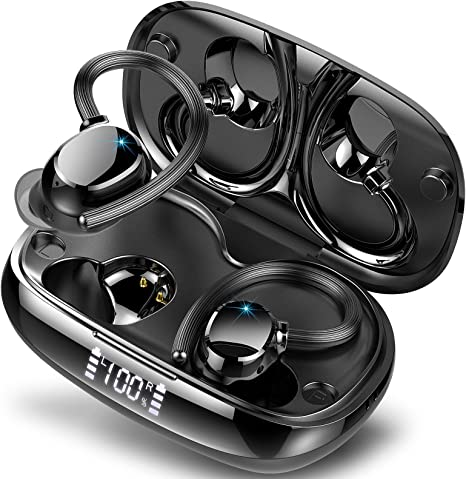Speaker Specs Explained: Wattage, Frequency Response, and Bluetooth Versions
Update on Oct. 23, 2025, 9:53 a.m.
Shopping for a new speaker can feel like trying to crack a secret code. You find a product that looks great, but then you flip to the “Technical Details” section and get hit with a wall of numbers and acronyms: 600W PEAK, 45Hz-40kHz, >80 dB SNR, Bluetooth 5.3.
What does any of it mean? Is bigger always better? This isn’t just random data; it’s a set of clues to the speaker’s true performance. You just need the decoder ring.
Consider this your official guide to becoming a spec sheet detective. We’ll use the specs of a real-world outdoor soundbar, the JBL RallyBar XL, to investigate four key clues that will empower you to make a smarter choice, every time.

Clue #1: The Power Mystery (Watts)
This is the number everyone sees first, and it’s the source of the most confusion. You’ll often see two power ratings. For example, the RallyBar XL lists 300W RMS and 600W PEAK.
What you need to know: The only number that truly matters for real-world loudness is RMS (Root Mean Square).
-
RMS Power represents the continuous, stable power an amplifier can deliver. This is the rating that reflects how loud the speaker will be during normal, sustained listening. Think of it as a car’s cruising speed on the highway.
-
Peak Power (or “Max Power”) is the absolute maximum power the amplifier can output in a very brief burst, for a fraction of a second, before it either distorts horribly or damages itself. It’s a marketing number designed to look big and impressive. Think of it as a car’s theoretical top speed if dropped off a cliff.
The Detective’s Verdict: Always, always compare speakers using their RMS wattage. A speaker with 100W RMS is significantly more powerful than one advertised with “500W Peak” but only 50W RMS. The 300W RMS of our case study unit tells you it’s a genuinely powerful system built for sustained high-volume playback.
Clue #2: The Sound’s Range (Frequency Response)
Next, you’ll see a range of numbers with “Hz” (Hertz) at the end, like 45Hz - 40kHz. This is the speaker’s Frequency Response.
What you need to know: This tells you the range of tones the speaker can reproduce, from the lowest bass to the highest treble.
-
The first number (e.g., 45Hz) represents the lowest bass note it can produce effectively. The lower this number, the deeper the bass will sound and feel. A small portable speaker might start at 80Hz, while a dedicated subwoofer could go down to 20Hz (the limit of human hearing). 45Hz is a very respectable figure for a soundbar, indicating strong bass capability.
-
The second number (e.g., 40kHz) represents the highest treble note. The human ear can typically only hear up to 20kHz (20,000Hz), so anything at or above that is excellent. A figure like 40kHz, while inaudible, suggests that the high-frequency drivers (tweeters) are very capable and will have no trouble reproducing the frequencies we can hear with clarity and without strain.
The Detective’s Verdict: For bass, a lower first number is better. For treble, anything around 20kHz or higher is great. But be aware: this spec doesn’t tell you how well it produces those tones. A reputable brand is more likely to provide a smooth, balanced sound across its entire stated range.
Clue #3: The Background’s Purity (Signal-to-Noise Ratio)
This spec, often abbreviated as SNR or S/N Ratio, is given in decibels (dB), like > 80 dB.
What you need to know: SNR measures how much stronger the audio signal (the music) is compared to the quiet, background electronic noise or “hiss” generated by the amplifier itself.
Imagine a completely silent room. A speaker with a low SNR might produce a faint but audible “hiss” when it’s on but not playing music. A speaker with a high SNR will be dead silent.
- Every 10 dB increase represents a tenfold increase in the ratio of signal to noise.
- For speakers, an SNR of 80 dB or higher is considered good. It means the background hiss is so quiet that it will be completely inaudible at any normal listening distance, even during quiet passages in your music.
The Detective’s Verdict: Higher is better. A good SNR is a sign of quality engineering. In a quiet indoor environment, it means a cleaner sound. In a noisy outdoor environment, it ensures that the only thing you hear is your music, not the speaker’s own self-noise.
Clue #4: The Wireless Connection (Bluetooth Version)
You’ll see a version number like Bluetooth 5.3. It’s easy to think the differences are minor, but they can significantly impact your experience.
What you need to know: Newer Bluetooth versions bring tangible improvements in reliability, efficiency, and features.
- Reliability & Range: Bluetooth 5.0 and newer versions offer significantly better range and more stable connections compared to the older 4.x standards. This is crucial in an open outdoor space where you might be moving around with your phone.
- Efficiency: Bluetooth 5.x is more power-efficient (for your phone, not the speaker), meaning less drain on your source device’s battery.
- Latency: Newer versions generally offer lower latency, which is the delay between your phone sending the signal and the speaker playing it. This is important if you’re watching videos.
- Bluetooth 5.2 and 5.3 specifically introduce features like LE Audio and Auracast, which allows a single source (like your phone) to broadcast audio to an unlimited number of compatible speakers or headphones—perfect for creating a synchronized sound system with friends.
The Detective’s Verdict: While an older Bluetooth version will still work (they are backward compatible), a speaker with 5.0 or higher is highly recommended. A cutting-edge version like 5.3 is a sign that the product is modern and future-proof.

Case Closed: Your Mission as a Smart Shopper
You are now equipped with the knowledge to look past the marketing hype. When you scan a spec sheet, you’ll know what to look for:
- For Loudness: Focus on RMS Power, not Peak.
- For Bass: Look for a low first number in the Frequency Response.
- For Clarity: Aim for a high SNR (>80 dB is great).
- For Connectivity: Prefer Bluetooth 5.0 or newer.
By using these clues, you’re no longer just a shopper; you’re an informed detective, ready to find the perfect gear for your adventures.




















